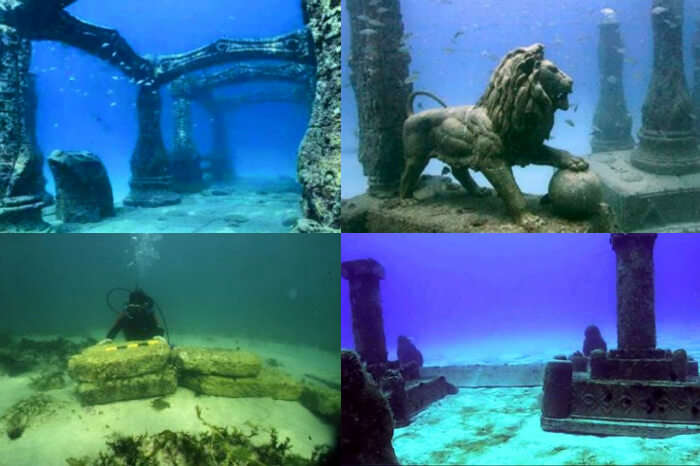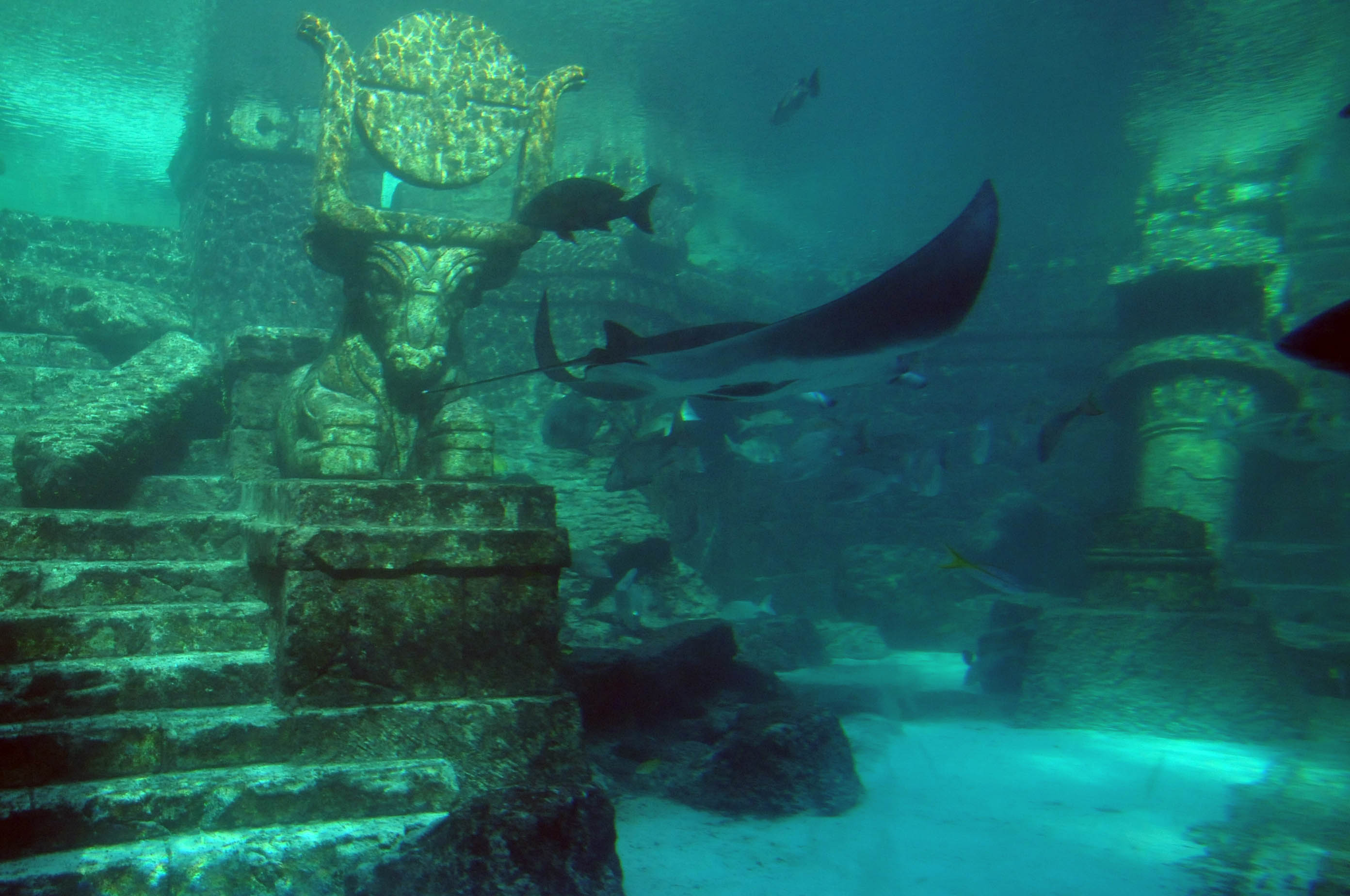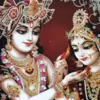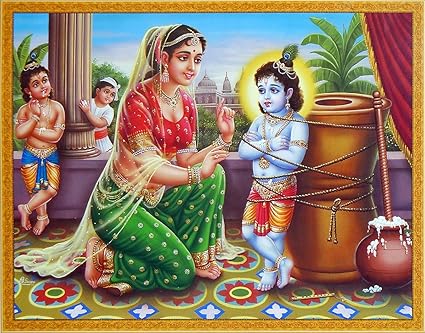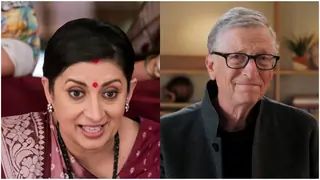Extinguishing the Forest Fire
King Parīkṣit, after hearing of the chastisement of Kāliya, inquired from Śukadeva Gosvāmī as to why Kāliya left his beautiful land and why Garuḍa was so antagonistic to him. Śukadeva Gosvāmī informed the King that the island known as Nāgālaya was inhabited by serpents and that Kāliya was one of the chief serpents there. Being accustomed to eating snakes, Garuḍa used to come to this island and kill many serpents at his will. Some of them he actually ate, but some were unnecessarily killed. The reptile society became so disturbed that their leader, Vāsuki, appealed to Lord Brahmā for protection. Lord Brahmā made an arrangement by which Garuḍa would not create a disturbance: on each half-moon day, the reptile community would offer a serpent to Garuḍa. The serpent was to be kept underneath a tree as a sacrificial offering to Garuḍa. Garuḍa was satisfied with this offering, and therefore he did not disturb any other serpents.
Krishna's Bird Carrier Garuda struck the body of Kaliya with his effulgent golden wings
But gradually, Kāliya took advantage of this situation. He was unnecessarily puffed up by the volume of his accumulated poison, as well as by his material power, and he thought, "Why should Garuḍa be offered this sacrifice?" He then ceased offering any sacrifice; instead, he himself ate the offering intended for Garuḍa. When Garuḍa, the great devotee-carrier of Viṣṇu, understood that Kāliya was eating the offered sacrifices, he became very angry and quickly rushed to the island to kill the offensive serpent. Kāliya tried to fight Garuḍa and faced him with his many hoods and poisonous sharp teeth. Kāliya attempted to bite him, and Garuḍa, the son of Tārkṣya, in great anger and with the great force deserving the carrier of Lord Viṣṇu, struck the body of Kāliya with his effulgent golden wings. Kāliya, who is also known as Kadrūsuta, son of Kadrū, immediately fled to the lake known as Kāliyadaha, underneath the Yamunā River, which Garuḍa could not approach.
Kāliya took shelter within the water of the Yamunā for the following reason. Just as Garuḍa went to the island of the Kāliya snake, so he also used to go to the Yamunā to catch fish to eat. There was, however, a great yogi known as Saubhari Muni, who used to meditate within the water there and who was sympathetic with the fish. He asked Garuḍa not to come there and disturb the fish. Although Garuḍa was not under anyone's order, being the carrier of Lord Viṣṇu, he did not disobey the order of the great yogi. Instead of staying and eating many fish, he carried off one big fish, who was their leader. Saubhari Muni was sorry that one of the leaders of the fish was taken away by Garuḍa, and thinking of their protection, he cursed Garuḍa in the following words: "Henceforward from this day, if Garuḍa comes here to catch fish, then--I say this with all my strength--he will be immediately killed."
This curse was known only to Kāliya. Kāliya was, therefore, confident that Garuḍa would not be able to come there, and so he thought it wise to take shelter of the lake within the Yamunā. But Kāliya's taking shelter of Saubhari Muni was not successful; he was driven away from the Yamunā by Kṛṣṇa, the master of Garuḍa. It may be noted that Garuḍa is directly related to the Supreme Personality of Godhead and is so powerful that he is never subjected to anyone's order or curse. Actually the cursing of Garuḍa--who is stated in the Śrīmad-Bhāgavatam to be of the stature of the Supreme Personality of Godhead, Bhagavān--was an offense on the part of Saubhari Muni. Although Garuḍa did not try to retaliate, the Muni was not saved from his offensive act against a great Vaiṣṇava personality. Due to this offense, Saubhari fell down from his yogic position and afterwards became a householder, a sense enjoyer in the material world. The falldown of Saubhari Muni, who was supposed to be absorbed in spiritual bliss by meditation, is an instruction to the offender of Vaiṣṇavas.
When Kṛṣṇa finally came out of Kāliya's lake, He was seen by all His friends and relatives on the bank of the Yamunā. He appeared before them nicely decorated, smeared all over with candana pulp, bedecked with valuable jewels and stones, and almost completely covered with gold. The inhabitants of Vṛndāvana, cowherd boys and men, mother Yaśodā, Mahārāja Nanda and all the cows and calves, saw Kṛṣṇa coming from the Yamunā, and it was as though they had recovered their very life. When a person regains his life, naturally he becomes absorbed in pleasure and joyfulness. They each in turn pressed Kṛṣṇa to their chests, and thus they felt a great relief. Mother Yaśodā, Rohiṇī, Mahārāja Nanda and the cowherd men became so happy that they embraced Kṛṣṇa and thought they had achieved their ultimate goal of life.
Balarāma also embraced Kṛṣṇa, but He was laughing because He had known what would happen to Kṛṣṇa when everyone else was so overwhelmed with anxiety. All the trees on the bank of the Yamunā, all the cows, bulls and calves were full of pleasure because of Kṛṣṇa's appearance there. The brāhmaṇa inhabitants of Vṛndāvana, along with their wives, immediately came to congratulate Kṛṣṇa and His family members. Brahmanas are considered to be the spiritual masters of society. They offered their blessings to Kṛṣṇa and the family on account of Kṛṣṇa's release. They also asked Mahārāja Nanda to give them some charity on that occasion. Being so pleased by Kṛṣṇa's return, Mahārāja Nanda began to give many cows and much gold in charity to the brāhmaṇas. While Nanda Mahārāja was thus engaged, mother Yaśodā simply embraced Kṛṣṇa and made Him sit on her lap while she shed tears continually.
Since it was almost night, and all the inhabitants of Vṛndāvana, including the cows and calves, were very tired, they decided to take their rest on the river bank. In the middle of the night, while they were taking rest, there was suddenly a great forest fire, and it quickly appeared that the fire would soon devour all the inhabitants of Vṛndāvana. As soon as they felt the warmth of the fire, they immediately took shelter of Kṛṣṇa, the Supreme Personality of Godhead, although He was playing just like their child. They began to say, "Our dear Kṛṣṇa! O Supreme Personality of Godhead! Our dear Balarāma, the reservoir of all strength! Please try to save us from this all devouring and devastating fire. We have no other shelter than You. This devastating fire will swallow us all!" Thus they prayed to Kṛṣṇa, saying that they could not take any shelter other than His lotus feet. Lord Kṛṣṇa, being compassionate upon His own townspeople, immediately swallowed up the whole forest fire and saved them. This was not impossible for Kṛṣṇa because He is unlimited. He has unlimited power to do anything He desires.










